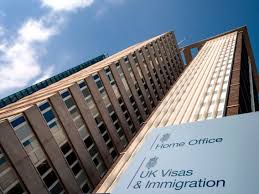A post intended to throw a little light on a misunderstood (or disunderstood) topic.
Let’s get straight to the point. The laws relating to regulation of entry to and forced departure from the UK have been an historical mess, and the fix is neither clear nor simple.
As a reaction to the horrors of World War 2, key nations met to sign the Refugee Convention of 1951 that bestowed on foreign migrants a shower of human rights. Questions remain – is the convention an essential anchor to fundamental human rights – or merely a brake on progress for change given the current migration landscape? Should the convention rights be unchangeable, or may they be qualified given criminal exploitation?
In medieval England, nationality was quite a straight forward topic: you were either a subject who owed allegiance to the monarch; or an alien. Empire and colonies complicated the issue slightly, but nevertheless our laws, for example the Commonwealth Immigrants Act 1962, managed to regularise our citizens of the dominion.
In 1687 England faced its first modern migration challenge when 50,000 Hugenots, French protestants fleeing Catholic oppression, began to arrive on English shores. Eighteen years later in 1705 we saw the first ‘Alien Act‘ aimed at the Scots after their ‘Act of Security‘ sought to oust the jurisdiction of the British Parliament on the succession of the monarch; and nearly a century later followed the Aliens Act 1793 aimed at regulating those fleeing the French guillotine in Paris.
In 1848 the Irish potato famine produced the first mass migration, London, Liverpool, Manchester and Glasgow alone sharing about 300,000 immigrants; and 1881 saw a huge migration of Jewish settlers, resulting in the Aliens Act 1905. This piece of legislation proved a turning point for Britain, being the first Act of Parliament that sought actively to control migration.
Progressing to modern times of the last century, two world wars brought about a significant global movement in populations, estimated in the millions, hence the introduction of the British Nationality and Status of Aliens Act 1914 which for the first time codified common law and statute.
World war one led in 1920 to the appointment of the ‘League of Nations High Commissioner for Refugees’, the office that oversaw the 1933 Convention Relating to the International Status of Refugees. It was this organisation that was to morph into the United Nations Relief and Rehabilitation Administration, later the Office of the United Nations High Commissioner for Refugees (UNHCR).
And then we reach the moment of the Refugee Convention Relating to the Status of Refugees 1951 which the UK signed in 1954. This convention produced a pivotal change in thinking, removing a case-by-case resolution of migration, to replace it with the global rights system which persists and binds the UK today.
Three years earlier the British Nationality Act 1948 had set about defining ‘nationality’ through citizenship. Then in 1962 the Commonwealth Immigrants Act sought to stem the tide of commonwealth migration to the UK by restricting entry to those with work vouchers (closely followed by the 1968 Act of the same name in response to the movement of Kenyan and Ugandan Asians). Within three years the Immigration Act 1971 was passed to control immigration and provide for deportation; closely followed by the British Nationality Act 1981 dealing again with the right of abode in the UK. Both of the latter remain in force.
The Immigration and Asylum Act 1999 sought to improve arrangements for removal from the jurisdiction, notification of suspicious marriages and provision of passenger information for those arriving in the UK. Within three years the Nationality, Immigration and Asylum Act 2002 made provision for the deprivation of British nationality and introduced the ‘life in the United Kingdom test’ and reintroduced the ‘Oath of Allegiance’. The Immigration, Asylum and Nationality Act 2006 (modified in 2014 and in 2016) went on to deal further with appeals, deportation on the basis of national security, employment of immigrants and financial support afforded to them. A year later saw the UK Borders Act 2007 enacted to introduce biometric registration and deal further with deportation. Meanwhile the Extradition Act 2003 brought in a much needed framework to expedite removal of criminals.
Now we have the Nationality and Borders Act 2022 which seeks to further regulate asylum applications, accelerating appeals, addressing modern slavery and providing removal of migrants to a safe country. It is supported by Exclusion (Article 1F) and Article 33(2) of the Refugee Convention which advises on circumstances in which an individual may be excluded from the convention.
Even in this selective outline, you will appreciate the mess, especially were you to follow up all of my embedded links placed in the blog post.
In reality, the UK borders, migration and asylum policy has been made on the hoof, reacting to the latest perceived problem rather than fashioned to balance community interests and individual rights.
As a simple commentator, I wonder why nobody has taken on the task of a root-and-branch legal revision in simple terms: setting out the indispensable human rights against community interests to provide a definitive pathways to navigate between them? Perhaps a twenty first century starting point would be to enable applications for asylum to be made digitally, safely and securely from outside the jurisdiction rather than a designated place within it?
Immigration lawyers may have some answers. But I suspect your guesses may be better?
Advertisements appearing below this post are placed by the platform not the writer. They are neither endorsed nor monetarised.
